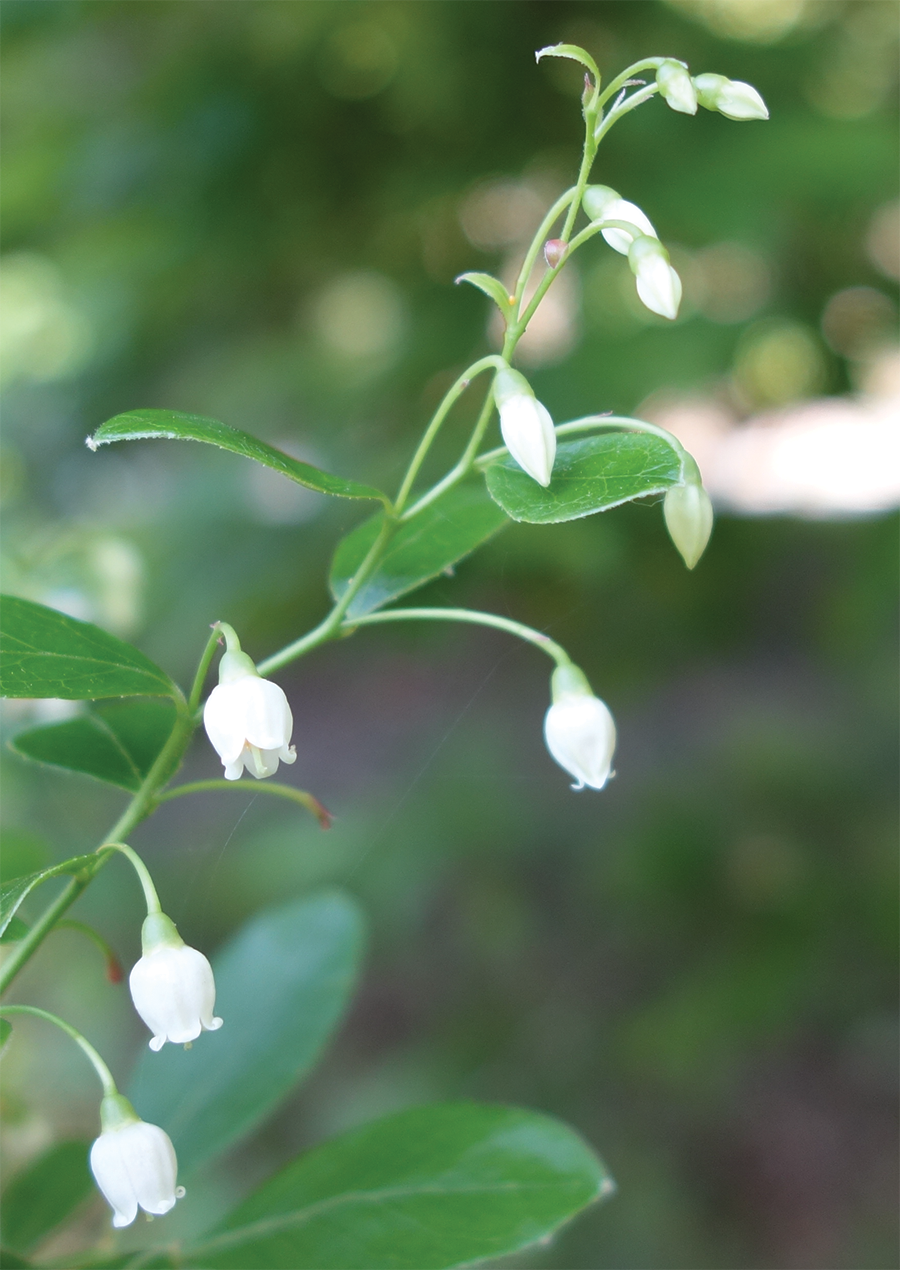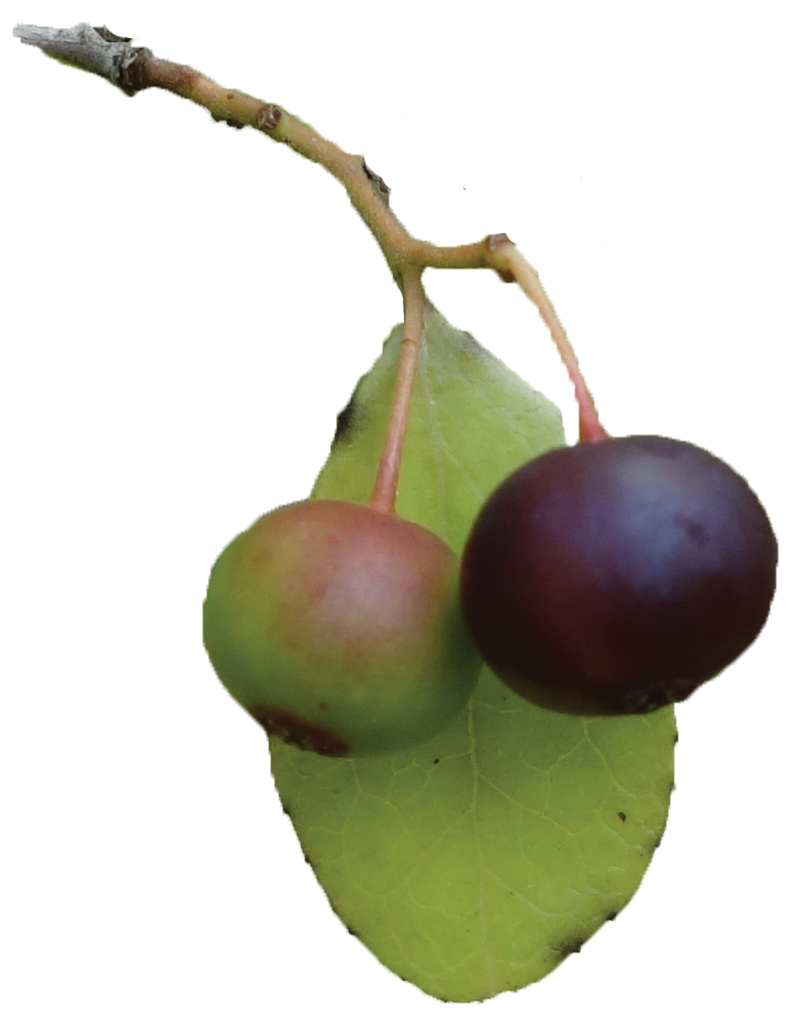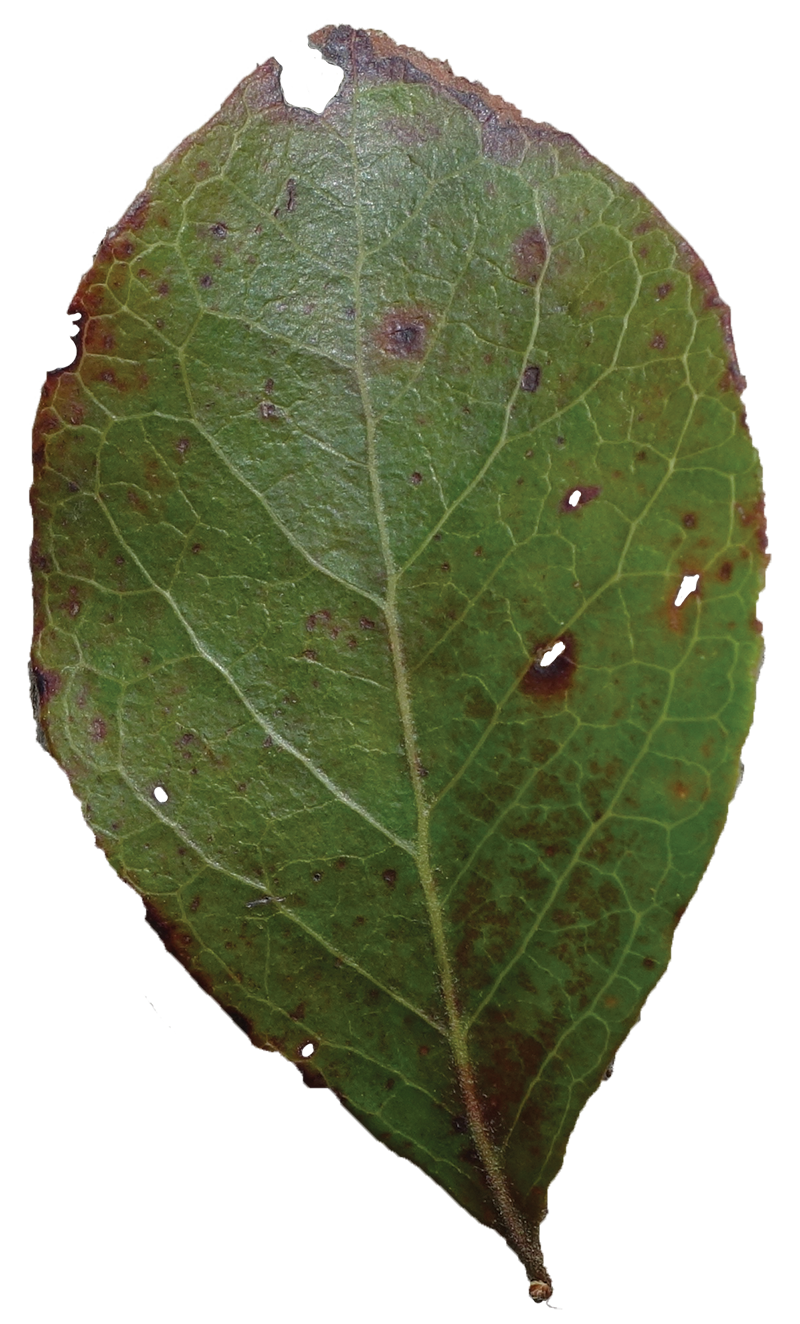
Small tree or large shrub with flaking grayish-brown to reddish bark and crooked trunk with twisted contorted branches. Leaves arranged alternately along stem, tardily deciduous to evergreen, turning a pink to deep maroon during winter months. Winter Huckleberry, Farkleberry and Sparkleberry are other common names.
Commonly found in pine-oak forests near streams or lakes.
North America’s largest blueberry plant. A larval host for Striped Hairstreak Butterfly. Extracts of roots traditionally used to treat diarrhea.






Leaf length: 1.00-3.00 inches
Tree height: 8.00-30.00 feet
Where to find Tree Huckleberry on the Louisiana State Arboretum Trails:
PAW - Pawpaw Loop Trail 12.0
BBR - Backbone Ridge Trail 7.0
WAB - Walker Branch Trail 18.0
Refer to our Live Map to locate this species and its interpretative signage on the trail system.
